1.What is a geotextile?
A geotextile is a fabric made of synthetic fibers (such as polypropylene or polyester) used in civil engineering and construction. It is mainly used for soil filtration, separation, reinforcement and drainage. The water permeability of geotextiles allows water to pass through while preventing the loss of soil particles or sediments, preventing soil erosion. It also forms an effective separation between different soil layers, preventing material mixing, and enhancing the bearing capacity and stability of the soil. In drainage systems, geotextiles help guide excess water and prevent water accumulation. Geotextiles are widely used in roads, railways, dams, mines and agriculture to improve the durability and stability of projects.
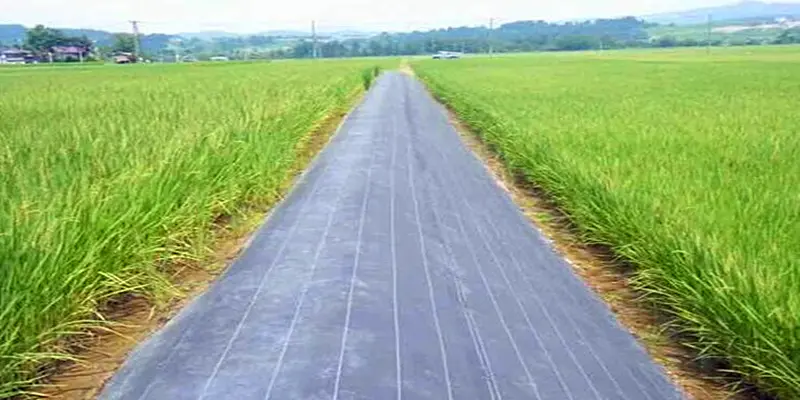
2.Can geotextiles be used in agriculture?
Yes!
The application of geotextiles in agriculture has multiple functions and can effectively improve the sustainability and production efficiency of farmland. It not only prevents soil erosion, but also maintains soil moisture by regulating water loss, helping crops to better absorb water and reduce the frequency of irrigation. In terms of weed control, geotextiles can inhibit weed growth by blocking sunlight, reduce the use of pesticides, and protect crops from weed competition. At the same time, geotextiles can be used as a filter layer in the drainage system to prevent sediment from blocking drainage ditches, ensure smooth water flow, and reduce water accumulation in farmland. In addition, it can also enhance soil stability, especially in slopes or areas prone to sliding, effectively preventing soil from sinking or erosion. On the whole, geotextiles can not only improve the efficiency of water resource utilization in agriculture, but also improve the soil environment, provide better growth conditions for crops, and promote the sustainable development of agriculture.

3.Focus on the specific application of geotextiles in agriculture to soil moisture retention
The specific application of geotextiles in agriculture to soil moisture retention can be achieved in the following ways, and its main goal is to reduce water evaporation, improve water utilization, and thus improve the crop growth environment.
3.1. Covering the soil surface
Geotextiles can be laid directly on the soil surface to cover it. This method can reduce the evaporation of water through the soil surface, especially in arid and semi-arid areas. The main principle of covering geotextiles is to reduce the direct exposure of soil to sunlight, reduce the evaporation rate, and allow water to enter the soil through the geotextiles.
Specific steps:
Before planting, lay the geotextile flat on the surface of the cultivated land and reserve planting holes for crops to germinate and grow.
When irrigation or rain comes, water can penetrate the geotextile to reach the roots and keep the soil moist.
The covered geotextile can also prevent water from evaporating too quickly and maintain the balance of surface temperature and humidity.
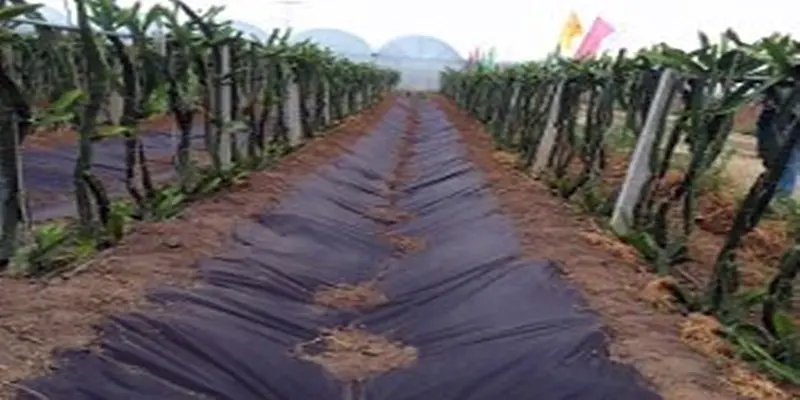
3.2. Combined with irrigation system
In drip irrigation or micro-spray irrigation system, geotextile can be used in combination with pipe system to enhance moisture retention. By covering the irrigation pipe with geotextile, the water distribution will be more even and can be kept near the root system of crops.
Specific steps:
After installing the irrigation system, lay the geotextile above the irrigation pipe to ensure that the irrigation water is not easy to evaporate after penetrating into the ground.
Geotextile can also help guide water to the root zone of crops to avoid water waste during over-irrigation.
3.3. Prevent soil crusting and hardening
In hot and dry climates, exposed soil is prone to form a hard crust on the soil surface due to water evaporation, which affects water penetration. Geotextiles can prevent this soil crusting, thereby maintaining water permeability and improving the soil's water holding capacity.
Specific steps:
Lay geotextiles on the fields, especially on soils that are prone to compaction.
This can effectively prevent the hardening of the topsoil caused by water evaporation, ensuring that subsequent irrigation or rainfall can penetrate smoothly.
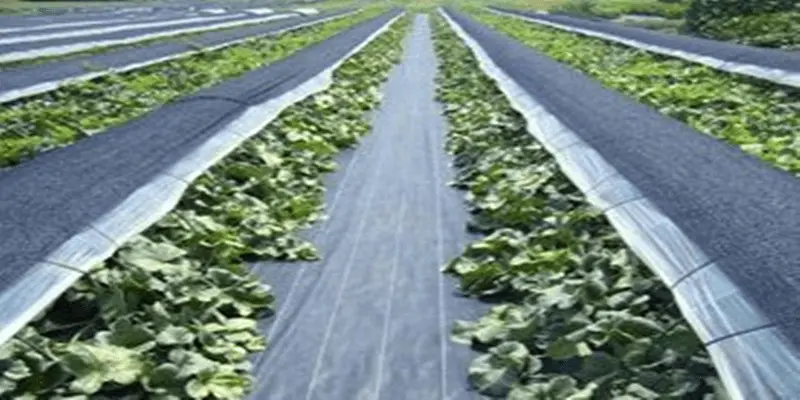
3.4. Prevent runoff and soil erosion
On sloping or slightly sloping farmland, geotextiles can be used to prevent water from running off too quickly, especially after heavy rain, which helps to retain water in the soil and prevent soil erosion. The porous structure of geotextiles helps to reduce the speed of water flow and allow more water to penetrate into the soil.
Specific steps:
Laying geotextiles on sloping fields can effectively slow down the scouring of water flow and prevent water runoff from taking away precious water and nutrients too quickly.
By guiding water to slowly penetrate into the roots of crops, geotextiles help to increase soil moisture and prolong the effectiveness of water.
3.5. Application in greenhouses or sheds
In greenhouses or sheds, geotextiles can be used as an efficient moisture retention tool, especially under climate control conditions. It can reduce evaporation and work with other greenhouse equipment (such as drip irrigation and sprinkler systems) to form an efficient moisture retention barrier.

Specific steps:
Cover the geotextile on the planting bed or in the gaps between crops to ensure that the soil moisture remains at an appropriate level.
In conjunction with the temperature control equipment in the greenhouse, the geotextile can help retain moisture in the soil so that it will not be evaporated too quickly by the heat in the air.
3.6. Long-term water retention function
Some types of geotextiles have a certain degree of water absorption, which can store and gradually release water, thereby keeping the roots of crops moist for a long time. This is especially important for some crops with high water requirements or desert agriculture.
Specific steps:
Choose a geotextile material with water absorption and apply it to arid or windy areas, which can help the water gradually release after irrigation and maintain a longer moisturizing effect.
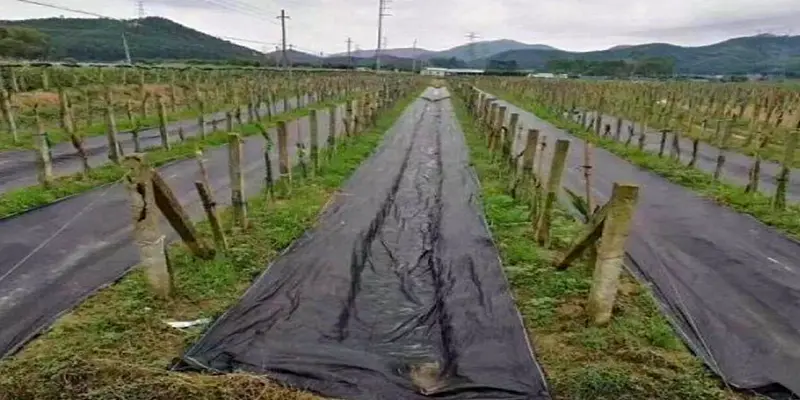
4.Summary
Geotextiles help improve soil moisture retention by reducing water evaporation, guiding water infiltration, reducing soil compaction and controlling soil erosion. Using geotextiles in agricultural production can not only reduce irrigation costs, but also effectively improve water resource utilization and ensure that crops grow in a more stable moisture environment.
Haoyang Environmental Co., Ltd. is a company specializing in the production of geotechnical materials. It has more than 20 years of production experience and can provide free advice for any problems you encounter during the purchase and use of geotechnical materials. You can communicate with us at any time if you have any questions.
Email: sale2@hygeosynthetics.com
Monile: +8616615773081
![]() 200g Staple fiber non-woven geotextile.pdf
200g Staple fiber non-woven geotextile.pdf
![]() 300g PET geotextiles test report.pdf
300g PET geotextiles test report.pdf
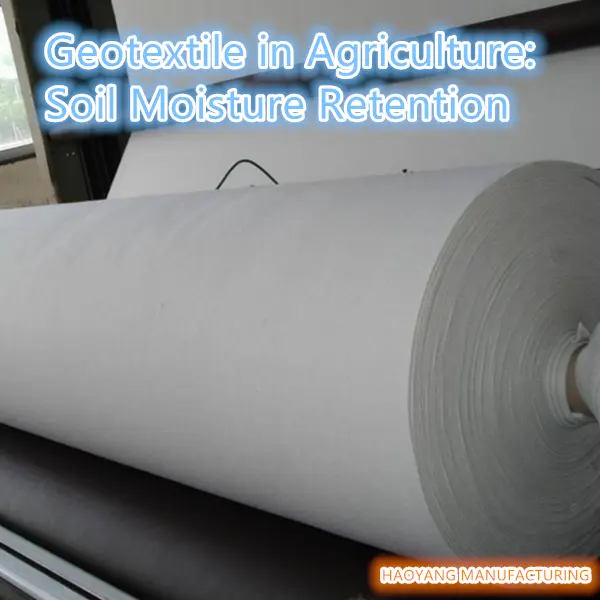
897.webp)
942.webp)
237.webp)